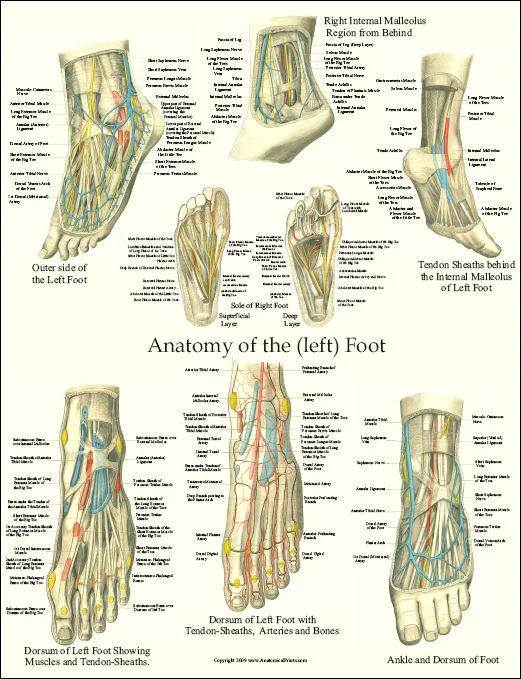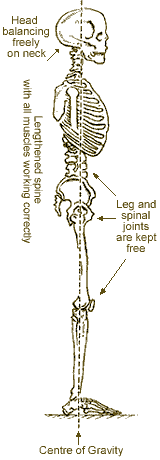Standing On Solid Ground
Be Kind to Your Feet!
How do you feel about your feet?
The seasons are changing here in New York, and many of us are putting away our summer footwear to prepare for fall. Some people love wearing sandals and shoes without socks in the summertime, even if it sometimes results in stinky sneakers.
Others, however, don't have much love for their feet. They are happy when fall weather returns so they don't constantly feel like their feet are on display. But whether you like traipsing around in sandals or prefer a heavy boot, we should all take a moment to appreciate our feet.
First of all, our feet are extremely complex arrangements of bone, muscle, tendons and nerves.
When we have difficulty with our feet it is hard to avoid the pain. If you have pain in a non-dominant hand, it's possible to reduce the use of that limb in order to allow the healing process to continue. But our feet are the foundation of our entire body, as well as our means of transportation. So we need to be kind to our feet!
Common Foot Ailments
If you tend to roll inward on your foot, and your shoes tend to wear out on the side by the big toe and arch, this is called pronation. If, as I do, you tend to roll outward, with shoes that often wear out on the side with your pinky toe, that is called supination. Some of you may have experienced plantar fasciitis, pain caused by inflammation of the plantar fascia at the bottom of the foot.
While some of these issues may be serious enough to seek medical attention, we can help prevent some problems from developing by the way we take care of our feet. The flip-flops we wear in summer don't provide any support, and probably aren't ideal for walking further than from the dressing room out to the pool. But what about the shoes we choose in the fall?
Whether we like heavy boots or high heels, both can be problematic at times. When choosing boots make sure they have room for your toes-- repeated chafing can cause corns, blisters or bunions. High heels, especially above 1 or 2 inches, further challenge our feet and legs. In addition to squeezing the toes, they can place a great deal of pressure on the balls of our feet.
As you can see from the diagram above, the height of the heels we choose will radically change the way the weight of our body is distributed throughout the foot. When wearing a 6 cm heel (approximately 2.36 inches) 75% of the weight of the body will be resting on the ball of the foot. It's obvious that this can cause foot pain. What may be more serious is the way it changes the rest of our body.
This illustration shows the way in which our body balances when our weight is evenly distributed. When the weight is displaced on to the ball of the foot, the pelvis shifts and the spine curves in order to compensate. This can obviously result in additional pressure on the knees, pelvis, lower back, and even the neck and shoulders.
I'm not saying you have to throw away all of your high heels. But perhaps you can save the highest ones for a special occasion where you are going to spend most of your time sitting down. For walking, for working, for daily life? Try to stick to a one or two inch heel whenever possible. If you're doing any back-to-school shopping, consider those high-heeled boots carefully before you purchase. Sure, they look fabulous in the store, but can you walk more than a city block without discomfort?
What can we do to help?
After a long day, perhaps you want to give your feet some extra love! Here's a few simple exercises I found at RealSimple.com.
Sit on the floor facing a wall with your legs straight and your feet flat against the wall. A small pillow or folded blanket can make this more comfortable. Bend forward as far as you can to stretch and lengthen your calf muscles and hamstrings. This can be soothing to the feet, legs, and pelvis, especially if you have been wearing heels.
Sitting in a chair or cross-legged on the floor, rest your left ankle on your right thigh and take hold of your left foot. Weave the fingers of your right hand through the toes of your left foot to separate them. Using your fingers, stretch your toes wide; try not to pull them up or down. Hold, then switch sides.
Stand up, placing your weight on your right foot and extending your left leg behind you. Tuck your left foot under so the tops of your toes touch the floor. You should feel a stretch along the top of your foot. Don't put too much weight on the left foot, just a gentle stretch will feel good. Hold, then switch feet.
Lastly, lie on your back with your bottom a few inches from a wall and your arms out. Place your heels on the wall with your legs forming a wide V. You'll feel a gentle pull in your inner thighs. What does this have to do with the feet? Overly tight inner-thigh muscles can overload the arches of your feet, so this stretch can relax them when they're cramped. Plus, elevating the legs reduces swelling, and spending a few minutes prone can help the whole body feel more integrated after a long day.
What more can we do? Love your feet! I've heard so many people say they think their feet are ugly, too big, too fat, too stubby, their toes are weird, their toes are too short or too long, they don't want anyone to see them unless they have been filed and polished and scrubbed and smoothed out. Whatever shape your feet are in, it's never too late to show them some respect. While a pedicure or a foot massage can be a lovely way to pamper yourself, don't be ashamed of your feet, even if they haven't been professionally groomed.
Be kind to your feet and they will be kind to you! If we take good care of our feet now, we can ensure that they won't fail us in the years to come. Thank you, feet! You give me support every day. You help me dance and run and walk around the city and the country and the planet that I love. - Erika Iverson














